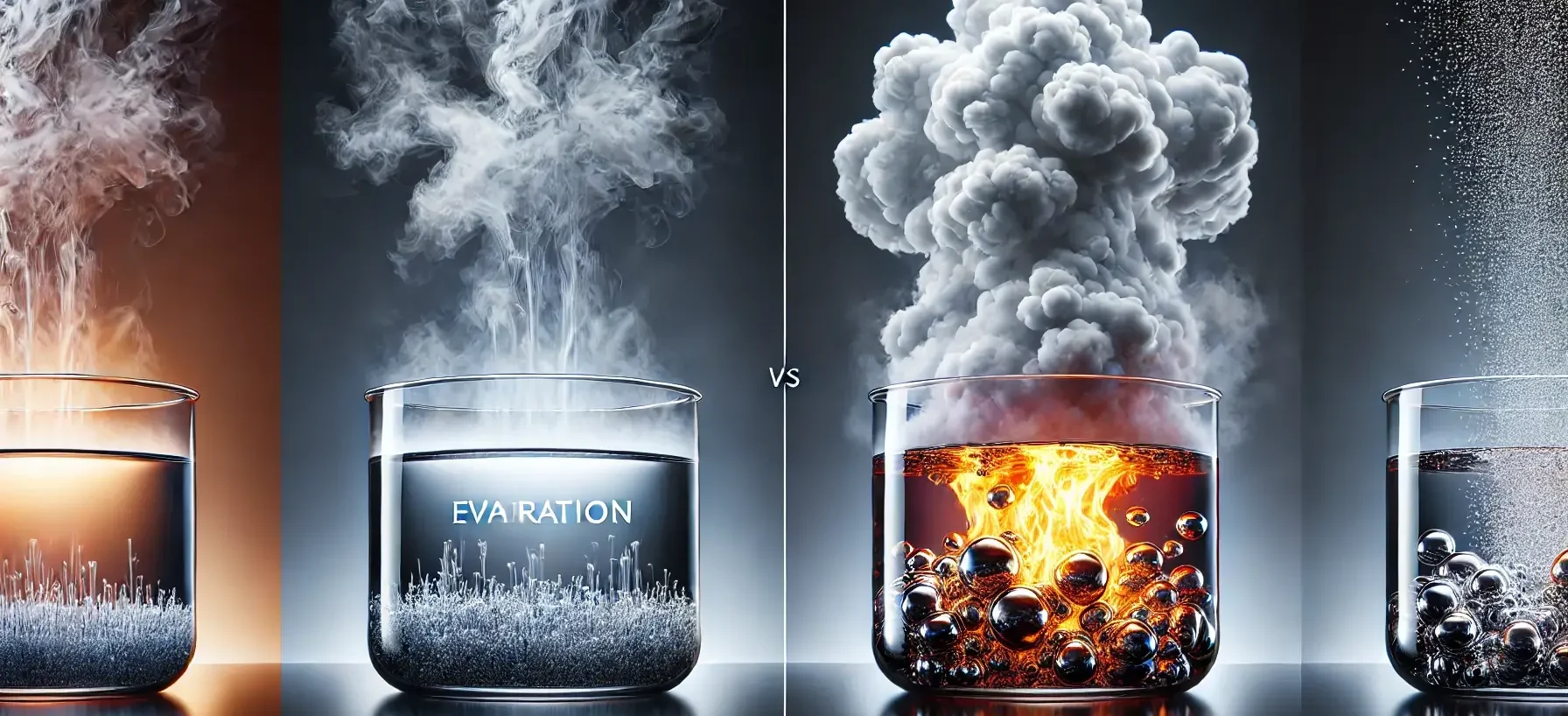-
Evaporation vs. Boiling:
- Evaporation: Occurs at any temperature below the boiling point, typically at the liquid’s surface.
- Boiling: Occurs at a specific boiling point throughout the liquid, with bubbles forming within the liquid.
-
Evaporation vs. Distillation:
- Evaporation: Primarily focuses on removing a solvent, usually without condensing the vapor.
- Distillation: Involves vaporizing a liquid and then condensing the vapor to separate components based on boiling points.
-
Evaporation vs. Drying:
- Evaporation: Involves the phase change from liquid to vapor, usually focusing on removing liquid from a solution.
- Drying: Involves removing moisture from a solid or semi-solid material, often using heat and air flow.
-
Evaporation vs. Crystallization:
- Evaporation: Focuses on removing solvent to concentrate a solution.
- Crystallization: Involves forming solid crystals from a solution as the solvent is evaporated or cooled.
Here’s a table summarizing the differences between evaporation and other heat processes:
| Aspect | Evaporation | Boiling | Distillation | Drying | Crystallization |
| Definition | Phase change from liquid to vapor at the surface. | Phase change from liquid to vapor throughout the liquid. | Vaporizing a liquid and condensing vapor to separate components. | Removing moisture from solid or semi-solid material using heat/airflow. | Forming solid crystals from a solution as solvent is evaporated or cooled. |
| Temperature | Occurs at any temperature below boiling point. | Occurs at a specific boiling point. | Involves heating to boiling point and then condensing vapor. | Often uses heat, but specific temperature varies. | Can occur as solvent evaporates or solution is cooled. |
| Location | Occurs primarily at the surface of the liquid. | Occurs throughout the liquid. | Involves both vaporization (usually within the liquid) and condensation. | Moisture is removed from the surface of the material. | Solids form as solvent is reduced or cooled within the solution. |
| Primary Focus | Removing a solvent. | Transition of liquid to vapor. | Separation of liquid components based on boiling points. | Removing moisture content. | Formation of solid crystals from the concentrated solution. |
| Phase Change | Liquid to vapor. | Liquid to vapor with bubble formation. | Liquid to vapor and then back to liquid (condensation). | Typically, moisture (liquid) to vapor. | Solution to solid crystals as solvent is reduced or cooled. |
| Condensation Involved | Not typically involved. | Not typically involved. | Condensation is a crucial part. | Not typically involved. | May involve condensation if cooling is part of the process. |
| Industrial Applications | Concentration of solutions, cooling. | Cooking, sterilization, heating. | Purification of liquids (e.g., alcohol, water). | Drying food, textiles, pharmaceuticals. | Production of purified substances, pharmaceuticals, food industry. |
| Surface Interaction | Occurs at the liquid’s surface. | Bubbles form and rise to the surface. | Vapor and liquid phases are involved in different stages. | Involves surface and sometimes internal moisture removal. | Involves the entire solution as crystals form throughout. |
This table captures the key differences between evaporation and the other heat processes mentioned.
Click Here to Watch the Best Pharma Videos!

